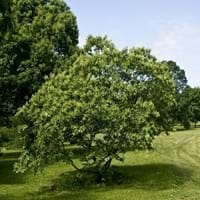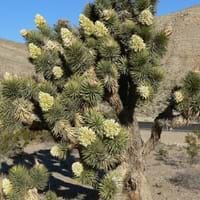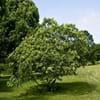Life Span
Perennial
Perennial
Type
Tree
Cactus or Succulent, Tree
Origin
Mid-Atlantic United States, Southeastern United States, South-Central United States
Southwestern United States, Mexico
Types
Not Available
Not Available
Habitat
Hillside, Ridges
Desert, Dry areas, Rocky areas, Sandy areas
USDA Hardiness Zone
5-9
6-10
Sunset Zone
Not Available
9, 10, 11, 12, 13, 14, 15, 16, 18, 19, 20, 21, 22, 23
Habit
Upright/Erect
Upright/Erect
Flower Color
White, Light Yellow, Ivory
White, Ivory
Flower Color Modifier
Bicolor
Not Available
Fruit Color
Light Green, Chartreuse
Light Green
Leaf Color in Spring
Green, Gray Green
Gray Green, Dark Green
Leaf Color in Summer
Gray Green, Dark Green
Gray Green, Dark Green
Leaf Color in Fall
Yellow, Gold, Tan
Gray Green, Dark Green
Leaf Color in Winter
Not Available
Olive, Gray Green, Dark Green
Leaf Shape
Elliptic
Linear
Plant Season
Spring, Summer, Fall
Spring, Summer, Fall, Winter
Sunlight
Full Sun, Partial Sun
Full Sun
Growth Rate
Slow
Very Slow
Type of Soil
Clay, Loam
Loam, Sand
The pH of Soil
Acidic, Neutral
Acidic, Neutral, Alkaline
Soil Drainage
Well drained
Well drained
Bloom Time
Late Spring, Early Summer
Early Spring, Spring, Late Winter
Tolerances
Not Available
Drought
Where to Plant?
Ground
Ground
How to Plant?
Seedlings
Leaf Cutting, Stem Cutting
Plant Maintenance
Medium
Medium
Watering Requirements
Average Water Needs, Requires watering in the growing season, Water once every two or three weeks
Allow soil to be completely dry in between waterings, Do not water frequently
In Summer
Lots of watering
Lots of watering
In Spring
Moderate
Moderate
In Winter
Average Water
Average Water
Soil pH
Acidic, Neutral
Acidic, Neutral, Alkaline
Soil Type
Clay, Loam
Loam, Sand
Soil Drainage Capacity
Well drained
Well drained
Sun Exposure
Full Sun, Partial Sun
Full Sun
Pruning
Prune in early spring, Remove damaged leaves, Remove dead branches, Remove dead leaves
Remove damaged leaves, Remove dead branches, Remove dead leaves
Fertilizers
All-Purpose Liquid Fertilizer
All-Purpose Liquid Fertilizer, No fertilizers needed
Pests and Diseases
Red blotch
Brown Spots, Red blotch
Plant Tolerance
Drought
Drought, Dry Conditions, Dry soil, Heat Tolerance, Rocky Soil, Sun
Flower Petal Number
Not Available
Single
Foliage Texture
Coarse
Bold
Foliage Sheen
Glossy
Matte
Attracts
Birds, Deers, Rabbits, Squirrels
Not Available
Allergy
Not Available
Not Available
Aesthetic Uses
Beautification, Landscape Designing, Showy Purposes
Decorating walls
Beauty Benefits
Not Available
Not Available
Environmental Uses
Air purification, Food for insects
Air purification
Medicinal Uses
Headache, Treating fever
Not Available
Part of Plant Used
Leaves, Seeds, Stem
Not Available
Other Uses
Decoration Purposes, Showy Purposes, Used in biomass, Wood is used for making furniture, Wood log is used in making fences
Not Available
Used As Indoor Plant
No
No
Used As Outdoor Plant
Yes
Yes
Garden Design
Edible, Feature Plant, Fruit / Fruit Tree, Mixed Border, Screening / Wind Break, Shade Trees
Feature Plant, Rock Garden, Wall
Botanical Name
CASTANEA pumila
YUCCA brevifolia
Common Name
Chinquapin
yucca palm
tree yucca
palm tree yucca
In Hindi
बौना शाहबलूत
Joshua Tree
In German
Zwergkastanien
Joshua Tree
In French
châtaignier nain
Joshua Tree
In Spanish
el castaño enano
Árbol de Joshua
In Greek
νάνος καστανιάς
Joshua Tree
In Portuguese
νάνος καστανιάς
Joshua Tree
In Polish
krasnolud kasztan
Joshua Tree
In Latin
P. castaneis
Joshua ligno
Phylum
Anthophyta
Tracheophyta
Class
Magnoliopsida
Magnoliopsida
Order
Fagales
Asparagales
Family
Fagaceae
Agavaceae
Clade
Angiosperms, Eudicots, Rosids
Angiosperms, Monocots
Tribe
Cherokee
Not Available
Subfamily
Cassidinae
Not Available
Number of Species
Not Available
Season and Care of Chinquapin and Joshua Tree
Season and care of Chinquapin and Joshua Tree is important to know. While considering everything about Chinquapin and Joshua Tree Care, growing season is an essential factor. Chinquapin season is Spring, Summer and Fall and Joshua Tree season is Spring, Summer and Fall. The type of soil for Chinquapin is Clay, Loam and for Joshua Tree is Loam, Sand while the PH of soil for Chinquapin is Acidic, Neutral and for Joshua Tree is Acidic, Neutral, Alkaline.
Chinquapin and Joshua Tree Physical Information
Chinquapin and Joshua Tree physical information is very important for comparison. Chinquapin height is 610.00 cm and width 150.00 cm whereas Joshua Tree height is 610.00 cm and width 300.00 cm. The color specification of Chinquapin and Joshua Tree are as follows:
Chinquapin flower color: White, Light Yellow and Ivory
Chinquapin leaf color: Green and Gray Green
Joshua Tree flower color: White and Ivory
- Joshua Tree leaf color: Gray Green and Dark Green
Care of Chinquapin and Joshua Tree
Care of Chinquapin and Joshua Tree include pruning, fertilizers, watering etc. Chinquapin pruning is done Prune in early spring, Remove damaged leaves, Remove dead branches and Remove dead leaves and Joshua Tree pruning is done Remove damaged leaves, Remove dead branches and Remove dead leaves. In summer Chinquapin needs Lots of watering and in winter, it needs Average Water. Whereas, in summer Joshua Tree needs Lots of watering and in winter, it needs Average Water.





